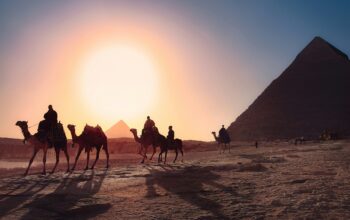Uzone.id – The financial world has undergone a significant change in the past few years due to the rise of ‘Buy Now, Pay Later’ (BNPL) services, often called PayLater. Generation Z or Gen Z has a specific interest in this trend, as they are increasingly favoring modern payment solutions over traditional credit cards.
The preference is influenced by multiple factors, including economic conditions, spending habits, and the unique benefits provided by PayLater services. This comes no surprise, because of its versatility and user-friendly features that contributed to its adoption rates.
Based on the research by Ecommpay, Gen Z tends to possess spending patterns that include spread out costs over time, and the Pay Later method has been providing their desire for deferred payments.
Here’s some of the interesting keys on why Gen Z chooses Pay Later more than traditional credit cards.
1. Economic Conditions and Financial Behavior
Gen Z has come of age during periods of economic instability, including the impacts of the COVID-19 pandemic. Their financial habits and outlook on debt have been shaped by these events. Generally, Gen Z is more cautious about debt than previous generations, having experienced the hardships of older generations with credit card debt.
Ecommpay also noted the difference in the habit between millennials and Gen Z – 52,9% of millennials are likely to use credit cards than Gen Z and 31,5% are far keener to use debit cards.
In other words, Gen Z considered credit cards as a payment method with high-interest rates, and the potential for accumulating substantial debt have become less appealing. Meanwhile, PayLater services is believed to offer a more manageable way to finance purchases without the fear of high-interest charges.
PayLater services typically provide interest-free periods if the balance is paid off within a certain timeframe, which aligns well with the desire of Gen Z to avoid long-term debt.
According to Forbes Advisor, using a PayLater option acts like a personal installment loan, and is often interest-free when payments are made on time and in full. However, if payments were missed, there could be an additional charge for the late payment.
2. Transparency and Simplicity
One of the major attractions of PayLater services is their transparency and simplicity. Credit cards often come with complex terms and conditions, hidden fees, and varying interest rates that can be confusing and intimidating.
On the other hand, PayLater services provide clear, straightforward terms, with a set number of payments over a fixed period, making it easier for users to understand and manage their finances.
This simplicity appeals to younger consumers who value straightforward financial products and want to avoid the complexity and potential pitfalls associated with credit cards. The transparency of PayLater services helps build trust and encourages responsible spending.
3. Technological Integration and User Experience
Gen Z are digital natives, having grown up with technology as an integral part of their lives. PayLater services leverage modern technology to offer seamless integration with online shopping platforms and mobile apps, providing a user-friendly and convenient experience.
These services are often embedded directly into the checkout process of e-commerce sites, allowing for quick and easy access without the need for a separate application process, as is often required with credit cards.
The intuitive design and ease of use of PayLater apps appeal to tech-savvy younger generations who expect smooth and efficient digital experiences. Moreover, many PayLater services come with budgeting tools and payment reminders, further enhancing their appeal by helping users manage their finances more effectively.
The Downside
In contrast to traditional payment methods, PayLater offers consumers a way to make upfront payments without using credit cards. Like it or not, PayLater has become popular, not just in Indonesia, but in the wider world.
According to a report by Lee Kuan Yew School of Public Policy in Singapore, PayLater’s market growth in Southeast Asia is projected USD33,6 billion by 2027.
“The region’s unique combination of a large unbanked population and increasing internet accessibility makes it fertile ground for PayLater players,” the article stated.
Unfortunately, the debt incurred by consumers through PayLater schemes reached USD382 million in March 2024, which was an increase of 23,9% from the same period a year ago.
Senior research analyst of Emarketer, Grace Broadbent mentioned that PayLater method is touching more demographics as it is showing exponential growth.
“Acceptance is growing. There’s new use cases, more demographics are getting involved. Despite nearly two-thirds of users being millennials and Gen Z, I do think we are seeing a lot more older users begin to use PayLater,” she said.
Emarketer also projected that 32,6% Gen X and 15,3% baby boomers will use PayLater to make a purchase in 2024.
The concerns continue to rise as PayLater gains ground. For instance, a group of Malaysian consumers have been entangled in a web of purchases and debt.
Whereas the largest group of PayLater users in Indonesia are millennials, with over 52% of debtors being millennials, or almost 7 million debtors per month, and Gen Z took their place with 35% of the debtors, representing an average monthly debt load of 4.6 million.
Indonesia’s Financial Services Authority (OJK) has been exploring regulatory frameworks tailored to PayLater services to ensure sustainable growth and consumer protection.
As these trends continue, the financial industry will likely see an ongoing evolution, with PayLater services playing a significant role in shaping the future of consumer credit.
















